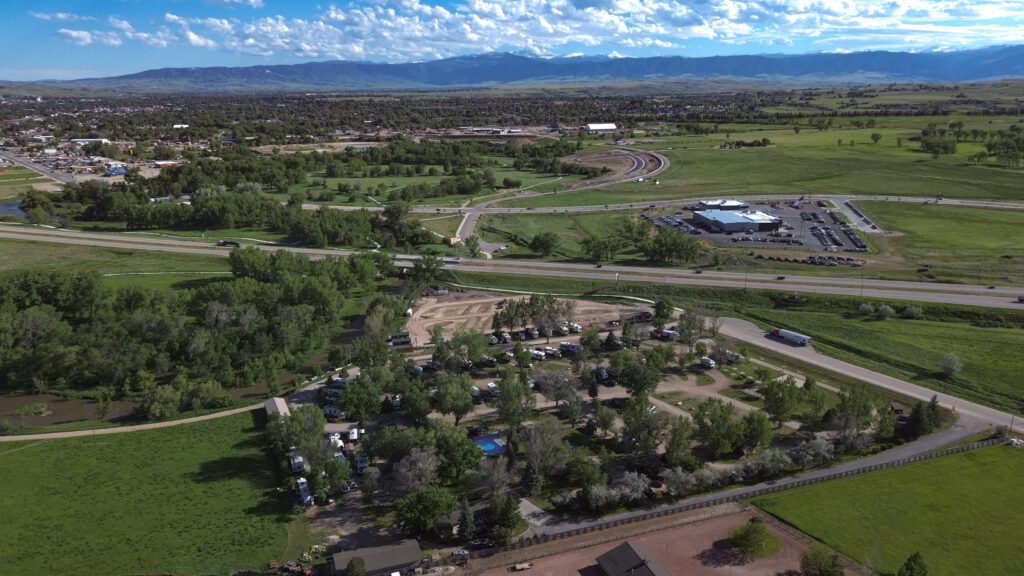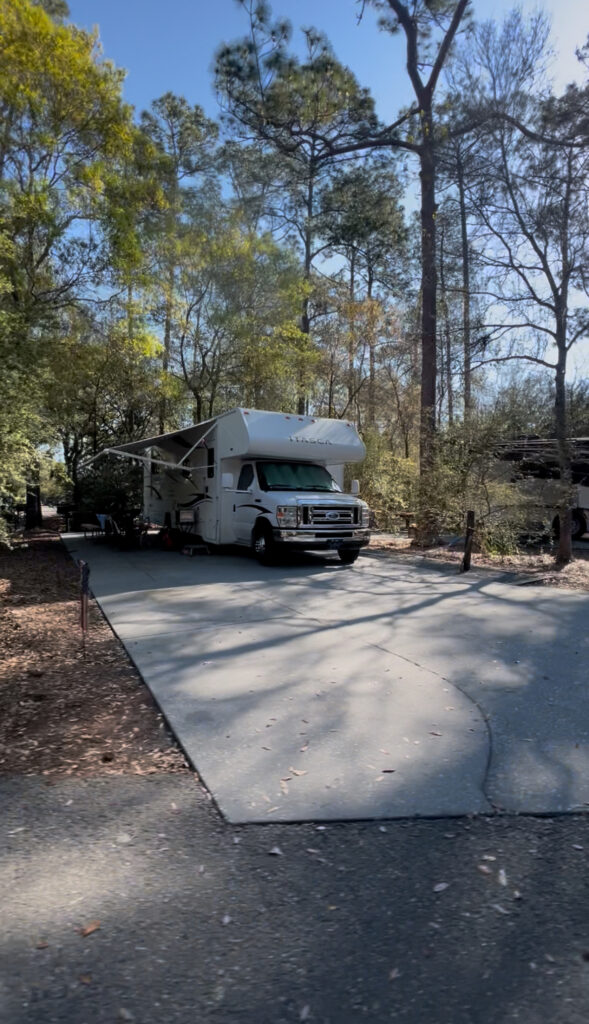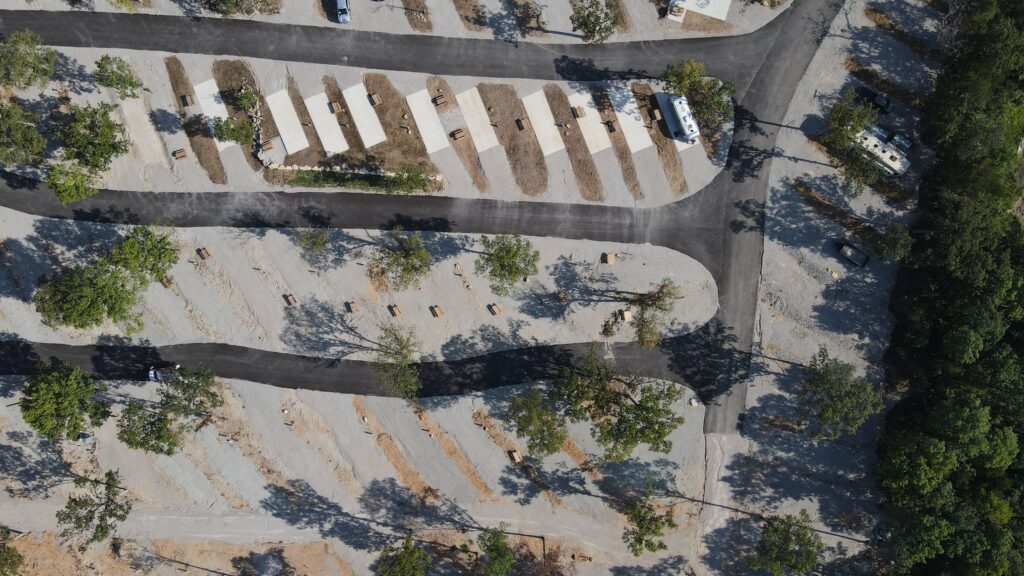You’re Not Building a Parking Lot — You’re Building an Experience
Why spacing, trees, and privacy matter more than squeezing in extra sites

Intro
We’ve been living full-time in our RV for over three years now, and in that time, we’ve stayed at hundreds of campgrounds—from rustic state parks to modern resorts and everything in between.
Here’s one thing we’ve learned: layout matters more than amenities.
You can have a great pool, pickleball courts, or a stocked camp store—but if guests feel crammed in, staring at their neighbor’s sewer hookup, or backed into a rocky, uneven site, none of those extras are going to matter.
If you’re designing or updating a park, don’t just ask, “How many sites can I fit on this property?” Ask, “What kind of experience am I building?” That shift changes everything.
The First Thing We Notice: The Space Between Sites
One of the biggest red flags when we pull into a park?
Rows of RVs packed in like sardines.
Even if everything else looks good, a tight layout instantly makes the stay feel less relaxing. And it’s not about being picky—it’s about practicality. Slides need room. Yards matter. And nobody wants to hear their neighbor sneeze through the wall.
Some of the best parks we’ve stayed at had wide, open sites—even in basic open fields. One park gave us more than 20 feet of yard space between us and our neighbors. No bushes. No trees. Just well-planned space—and it felt great.
On the other hand, we’ve pulled into highly-rated parks that looked decent online but had sites so tight we couldn’t fully open our awning. That’s not a setup for a good stay—it’s a setup for regret.
What Campers Like Us Actually Value
After traveling coast to coast, here’s what consistently makes an RV site feel comfortable:
- 20+ feet between sites — even if you don’t add privacy barriers
- Landscaping that separates sites naturally or visually
- Defined driveways and pads so the site feels clean and intentional
- Natural shade vs. open skies — ideal if you offer both for guests who use satellite internet
- Hidden utilities — sewer hookups should never be the focal point of the site
Guests don’t need perfection. They need thoughtfulness.

What State Parks Understand (That Many Private Parks Miss)
We’ve always said this: if you want to understand why people camp, go visit a state park.
They’re not flashy. They don’t have big pools or golf cart rentals. And yet they’re always booked.
Why? Because they offer the one thing most campers are really looking for—peace, nature, and privacy.
Take Disney’s Fort Wilderness as an example. It’s one of the best-designed parks in the country. They didn’t bulldoze everything and pack in pads—they created a wooded resort experience. You feel like you’re camping, even with luxury amenities around you.
That balance—between space, nature, and comfort—is what makes people come back. And it’s exactly what modern guests are craving.
The Biggest Mistakes We See (Over and Over)

We’ve lost count of how many times we’ve seen brand-new campgrounds make the same avoidable mistakes:
- Tearing down all the trees to make room for symmetrical rows of pads
- Laying gravel with no landscaping or boundaries between sites
- Designing for density, not usability
We’ve stayed at parks where every site looked exactly the same, with no thought given to views, layout, or orientation. It felt like pulling into a storage yard.
Compare that to a small family-owned park we stayed at where each site had its own charm—a tree here, a fire ring there, bushes between rigs. It wasn’t perfect, but it felt like it was designed by someone who had actually stayed in an RV.
Our Personal Experiences from the Road
Some of our favorite sites ever weren’t the ones with the best views—they were the ones that made us feel comfortable.
We once stayed at a park in the middle of nowhere with a basic gravel layout—but the space between rigs and the view of an open field made it feel like we had our own little slice of land.
Then there was a “resort” we stayed at where the rigs were so tightly packed that we couldn’t open both sides of our slide without adjusting where we parked. That’s not an experience we’d return to—or recommend.
And when the kids want to play outside or ride their bikes, that extra space matters. So does a sense of privacy—even if it’s just a small row of bushes or a few feet of grass.
What Campground Owners Can Do Right Now
You don’t need a million-dollar redesign to improve guest experience. Here are small things that make a big impact:
- Preserve existing trees wherever possible—design around them
- Add landscaping or shrubs to visually divide sites
- Clearly define pads and roads with gravel or pavement
- Walk the sites yourself—would you feel relaxed staying there with your family?
- Think beyond the brochure—build a space, not just a site count
Designing your campground with comfort and space in mind doesn’t just create better experiences—it builds loyalty and trust.
Final Thought: People Camp to Feel Something—Let Them
At the end of the day, your guests aren’t just pulling in for hookups. They’re there to relax, to connect, to spend time outdoors.
If your layout helps them do that, you’ll earn more than a positive review—you’ll earn repeat business and word-of-mouth marketing that money can’t buy.
You’re not just providing parking. You’re providing peace.
Design accordingly.
About us
We’re Jenn and TJ—a full-time RVing family of five, traveling the country since 2022 and living life one campground at a time.
As the founders of CampSite 360, we specialize in creating interactive virtual tours and detailed maps for RV parks, campgrounds, and glamping destinations across the U.S.
We don’t just work in this industry—we live it. We’ve stayed at hundreds of parks and experienced the good, the bad, and the truly unforgettable.
Our goal with these blogs is simple: to share real feedback from the road and help campground owners build better guest experiences based on what actually matters to the people pulling in.
Thanks for following along—we’re excited to help you make your campground a place guests want to return to.
